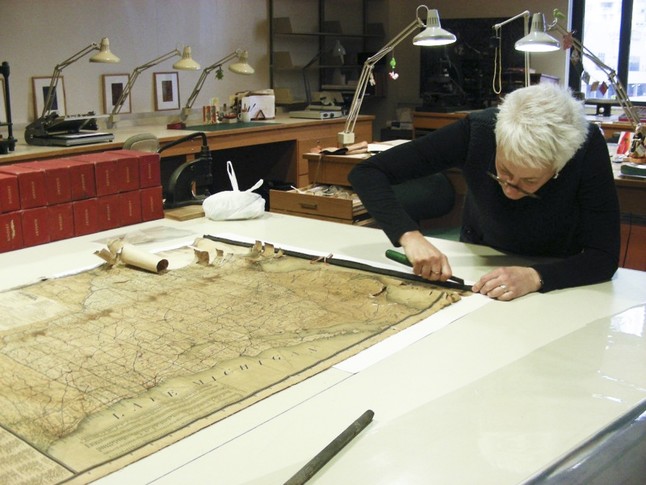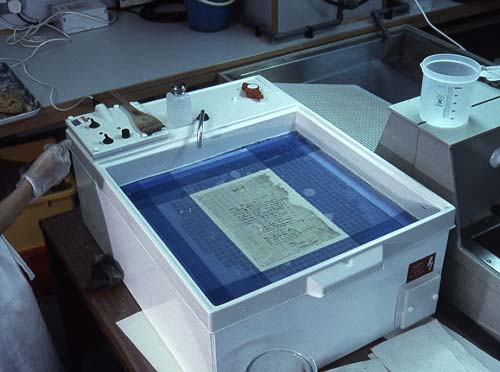Washington Map Society
Articles: WMS Pres Eliane Dotson
Many thanks to Eliane and Jon Dotson for allowing us to reproduce their articles.
Note: The articles are in .pdf format, so depending on your browser settings and moon phases, your click may result in the article opening in a new tab, a new browser window, or download to your "Downloads" folder. Sorry, I can't speak for MAC users.
Added January 15, 2018:
Click HERE for "Mapping Our Ancestors, Part 2" of Eliane's very interesting continuation on research family history.
Added December 7, 2017:
Click HERE for "Cities Around the World: The Plans and Views of Braun & Hobenberg" by Joe McAlhany.
Added November 2, 2017
Click HERE for Eliane Dotson's meticulously researched and VERY interesting article, "Mapping Our Ancestors, Part 1." Besides the writing, your webmaster is struck by the fine reproduction of maps.
Added August 9, 2017
Click HERE for Joe McAlhany's top ten reference book picks and bonus website commentary.
Click HERE for "Map Manipulations: A Brief Perspective on Gerrymandering" by Jon Dotson. Timely!!
Added May 18, 2017
Click HERE for ".... Dave Morgan is one of these types of collectors. A large part of his collection, amassed over nearly 50 years, illustrates the political evolution of the United States. His focus on this theme is the "progression of the knowledge of the continent, the political divisions, and how the states came about."
Added March 14, 2017
Click HERE to read another great article by Joe McAlhany: Knowledge is Power to the People: The Society for the Diffusion of Useful Knowledge and their Map Series.
Added January 16, 2017
Click HERE to read about the mysterious island of Korea.
Added October 12, 2016
Click HERE to read The Early American Land System.
Added September 12, 2016
Click HERE to read "The Island of California" by Joe McAlhany.
Added June 15, 2016
Click HERE to read "Truth and Lies: Tips to Identify Forgeries and Reproductions."
Added May 26, 2016
Click HERE to read Eliane's insights into map dealer backgrounds. VERY interesting.
Added April 5, 2016:
Click HERE to read about Eliane's visit to cartographic paradise.
Added March 3, 2016:
Click HERE for Old World Auctions review of their auction business and shared highlights and takeaways from the market in 2015.
Click HERE for this great article by Joe McAlhany discussing the hidden agendas behind maps and showcasing a new free online resource for persuasive cartography.
If you own The Map Collector, MapForum, or Mercator’s World Magazines, you’ll appreciate this gift from Old World Auctions: a complete index of the issues and articles:
Click HERE for Map Collector index.
Click HERE for MapForum Magazine index.
Click HERE for Mercator's Wrold index.
Added October 13, 2015:
Ably authored by Jon Dotson, your webmaster really enjoyed his "Brief History of Surveying Tools" click HERE.
Added September 7, 2015:
Two articles by Joe McAlhany. Click HERE for a very interesting article about 19th century American atlas publishers, and click HERE for an article about puzzle maps with lovely illustrations.
Added June 23, 2015:
Fascinating article on the state of Franklin, click HERE.
Added May 15, 2015:
Sounds like the title to a Dashiell Hammett noir mystery title, but click HERE for Joe McAlhany's is "The Man Who Knew too Much: Athanasius Kircher."
Click HERE "How to Properly Package Maps and Books," HERE for "Tube Packaging Instructions," HERE for "Flat Packaging Instructions," and HERE for "Book Packaging Instructions." These four articles authored by Eliane Dotson.
Added March 2015: Click HERE to read "History of Papermaking for Map Collectors" authored by Marti Griggs and HERE for "The Sea of Verrazano" authored by Eliane Dotson.
Added February 2105: Click HERE for very interesting auction trends analysis. Following is an extract: For 2014, Old World Auctions sold 78% of its lots versus 69% the year prior. For comparative purposes, according to Americana Exchange, the 2014 sell-through rate of all its auctioneers (who listed nearly 1,300 auctions – comprised of mostly antique books, maps, and ephemera) was 74%.
Added February 2015: Click HERE for "The Life and Work of Kit Kapp," by Eliane Dotson.
Added February 2015: Click HERE for "A Collector with a Worldly Perspective" by Joe McAlhany & Eliane Dotson.
Added prior to February 2015 ( and also timeless):
Click HERE for description of collector's database options.
Click HERE for "Advice and Anecdotes from Our Favorite Map Dealers." This is a fun, interesting, and probably unique insight into vast amounts of experience and knowledge --- including the psychology of collecting and collectors. Mandatory reading!!
Click HERE for "Online Resources for Researching Maps."
Click HERE for "Condition Terms Demystified" - Eliane Dotson.
Click HERE for Eliane Dotson's article on the art and science of establishing auction estimates.
Click HERE for Marti Griggs's article on "Symbolism and Allegory for Map Collectors."
Click HERE for Eliane's very interesting article about Lake Parime and the Golden City, El Dorado.
Click HERE for Eliane's tale of deceit, intrigue, and theft of intellectual property. Hint, it takes place over 300 years ago!
Click HERE for Joe McAlhany's wonderful article from Old World Auction's August newsletter, "Mountains of the Moon."
Click HERE for Eliane's July 2014 newsletter including a very interesting discussion of the compass rose.
Click HERE for Eliane's latest newsletter. As usual, it is thoughtful and relevant.
Click HERE for Eliane's newsletter which includes a very interesting discussion about color on maps written by Joe McAlhany.
Click HERE for an earlier newsletter, "Untold Stories of Map Collectors."
"Conserving Antique Maps"
by Eliane Dotson, Old World Auctions
(Photos at end of article)
The first question regarding a collection is which pieces need restoration, and which ones simply require preservation in their current state. Restoration should be considered for items for which the rate of deterioration can be slowed as well as for those for which the present condition can be substantially improved. The Conservation Center for Art & Historic Artifacts (CCAHA) has developed conservation treatment priority categories to help institutions and individuals determine when and if restoration work should be initiated. "Urgent" items are those that are unsafe to handle due to severe flaws, including extremely brittle paper, the presence of active mold or mildew, or items damaged by fire or flood. Another category includes "serious but not urgent" items that are in jeopardy of becoming damaged, such as those with acidic backing or mounts from old framing, long tears, or adhesives or tapes that cause discoloration. Click here for the full list and description of CCAHA treatment categories (http://www.ccaha.org/uploads/media_items/ccaha-treatment-priority-categories.original.pdf).
Restoring paper can be costly if potential problems are left untreated. Sometimes, no amount of money can save them. Paper that has suffered extreme water damage or long-term exposure to acidic materials may lose its structural integrity and no longer benefit from conservation. In other instances, there are trade-offs to restoration. Hand-colored maps will lose some of their color with certain repairs, such as cleaning, stain removal, or de-acidification. One of the most common trade-offs, of course, is cost. Often the value of an antique map does not warrant the price of restoring it. This is commonly seen with 19th century maps that were produced in larger quantities on inferior quality paper, making them extremely susceptible to tears, toning, and brittleness.
Fortunately, most tragedies can be prevented. If you notice a problem, seek the advice of a qualified paper conservator immediately. Generally small defects can be treated easily and inexpensively, if done before the paper sustains permanent damage and deterioration. Some of the most common types of restoration treatments are: repairing tears, chips, holes and separations; flattening creases; and cleaning stains or discoloration. These are often some of the least expensive repairs to make, depending on the size of the map and the severity of the condition. Flattening a map or basic cleaning will cost around $100 for a folio-sized map, although if there are other issues, such as tears or localized stains, the cost will increase. The cost of repairing tears or holes depends on the repair method, with minimally invasive techniques (heat-set tissue or gummed adhesive tape) often costing less than $100. On the other hand, the leaf casting method, in which a slurry of beaten paper fibers and water is used to fill in areas of weakness, has a higher set-up cost and will usually run over $150. Adding a backing, such as Japanese tissue, to stabilize cracks, separations, or weakness in the paper costs around $150-200 for a folio-sized map. On the other hand, removing a backing is much more complicated and costly, depending on the type of adhesive used. The most expensive types of maps to repair are those that require extensive tape removal (especially if the tape is degraded) and those that are linen backed or varnished, which may have to be removed prior to making any repairs, and can bring the cost into the thousands.
Because the cost of restoration can be so high, some collectors opt to take matters in their own hands and make some repairs themselves. However, most amateur repairs worsen the original problem or create new problems, resulting in the need for more costly restoration services. Never try to repair a valuable piece of art yourself. That said, there are some minor problems that can be handled by a cautious and informed collector. Surface soil or pencil marks in the margins or verso can be cleaned with a dry cleaning sponge (also known as a vulcanized rubber sponge) as long as the paper is not brittle or too thin. In some situations a soft eraser can be used, however over-cleaning can cause more damage than the dirt itself as it will remove the top layers of the paper and may cause a tear or hole. Do not attempt cleaning with water or solvents.
Tiny marginal tears or fold separations can be closed with special archival tape, heat-set tissue, or gummed adhesive tapes that are water activated. Tears that extend into the printed image are best left to the expertise of a conservator. Nevertheless one must be careful that the materials are suitable for antique paper and will not cause damage or discoloration over time. Unfortunately, the word "archival" is not regulated, so amateurs must be cautious about buying products marketed as such. Never repair a tear with common pressure-sensitive (Scotch) tape, because the adhesive will yellow and permanently stain paper. Heat-set tissue is the most preferable material to use, as it is easier to remove. If further restoration work is required on the map, the conservator may have to remove any archival tape before other repairs, such as cleaning, can be performed.
We are the temporary custodians of the items in our collection. If we do not take proper steps to preserve our collections they will be lost to the ravages of time. With the advances made in the world of art and paper conservation over the last 30 years, the resources to restore antique maps are now available to collectors everywhere.


For more information on preservation and conservation:
Library of Congress (http://www.loc.gov/preservation/)
Conservation Center for Art & Historic Artifacts (CCAHA) (http://www.ccaha.org/publications/technical-bulletins)
National Archives and Records Administration (http://www.archives.gov/preservation/)
American Institute for Conservation of Historic & Artistic Works (AIC) http://www.conservation-us.org/
For a listing of conservators in your area, you can use AIC's online conservator search tool:
http://www.conservation-us.org/about-conservation/find-a-conservator#.Uq9tirTF5I0